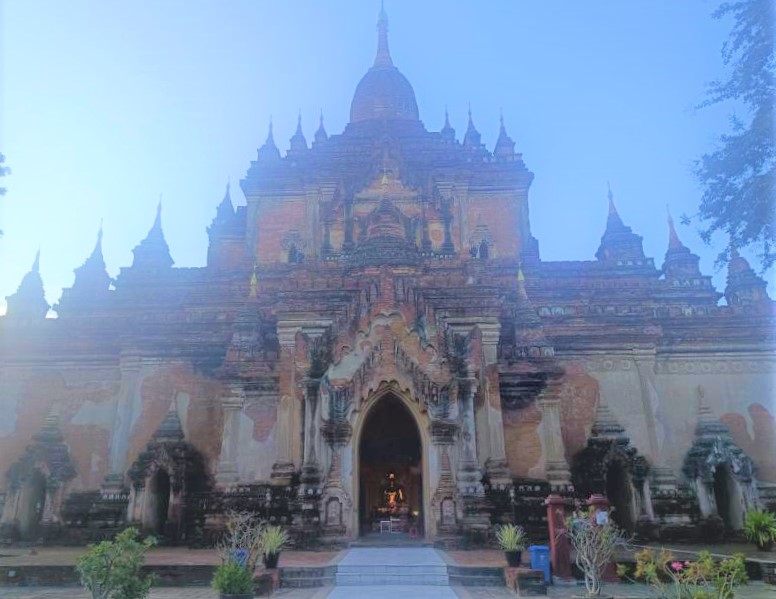The earthquake that hit Myanmar on 28 March caused significant damage to both people and buildings. The Bagan region was also affected, with some ancient cultural heritage sites, including pagodas, stupas, and temples, experiencing minor damage. Timely restoration efforts were carried out, according to the Bagan Archaeological Department.
“When the earthquake hit Bagan, it caused damage only to bricks. There is no collapse. On that day, we immediately conducted an on-ground study in groups. Since 2012, we have been working with UNESCO on how to conserve the mural paintings, what should be prioritized, and how to implement preventive measures in case of an earthquake. After the 2016 earthquake, we collected the survey systematically and carried out measures to ensure the strength. Although the current earthquake lasted long, there were only minor incidents, such as dust and debris falling from the bricks and small cracks in the walls. The inner structures of stupas and pagodas are solid, and only slight cracks appear on the outer surfaces. There is no danger and no bricks have collapsed,” said U Kyi Lin, department assistant director.
During the restoration efforts following the damage caused by the 2016 earthquake in Bagan, certain structural elements such as terraces, surrounding stupas, main facades, and Yama Lat Nyo, including various surrounding architectural features of pagodas and stupas, were not fully restored or reinforced. However, no significant damage occurred during the recent earthquake.
The umbrellas of Shwezigon and Htilominlo pagodas and other famous pagodas in Bagan were shaken due to the earthquake on 28 March, but they were not destroyed. However, some mural paintings from the three pagodas were affected, and the department invited donors to maintain them.
The 43rd UNESCO World Heritage Committee meeting held in Baku, Azerbaijan, on 6 July 2019 recognized the pagodas in the Bagan Ancient Cultural Heritage Zone as World Heritage Sites, and the Archaeological Department also works with UNESCO in preserving the cultural heritage.
There are 53 world heritage sites in Italy, 53 in China, 47 in Spain, 44 each in France and Germany and 37 in India. In the Southeast Asian region, UNESCO allows each country to have up to 15 heritage sites recognized.
Nyein Thu (MNA)/KTZH
#TheGlobalNewLightOfMyanmar


